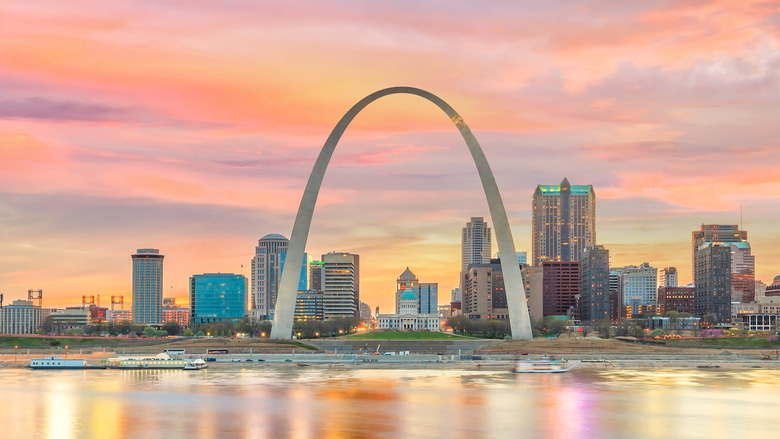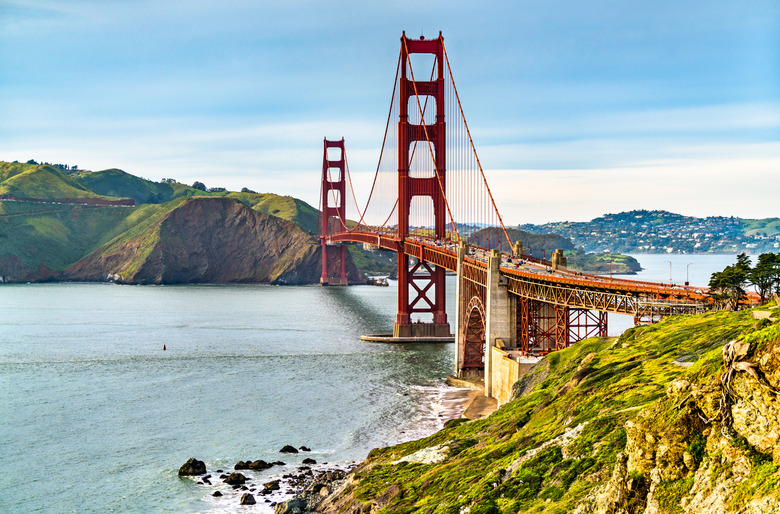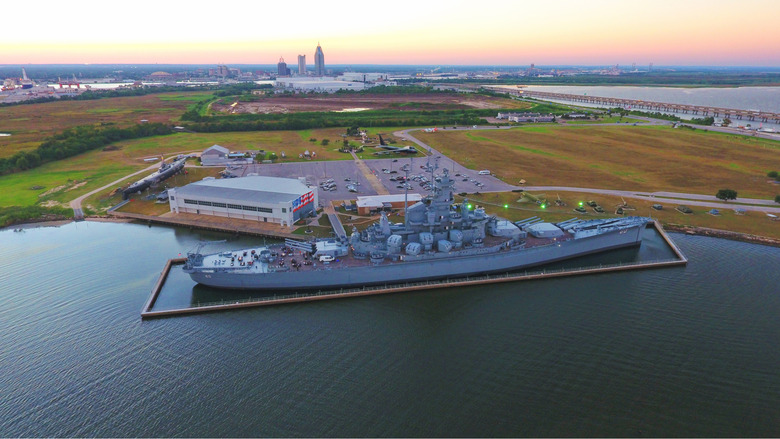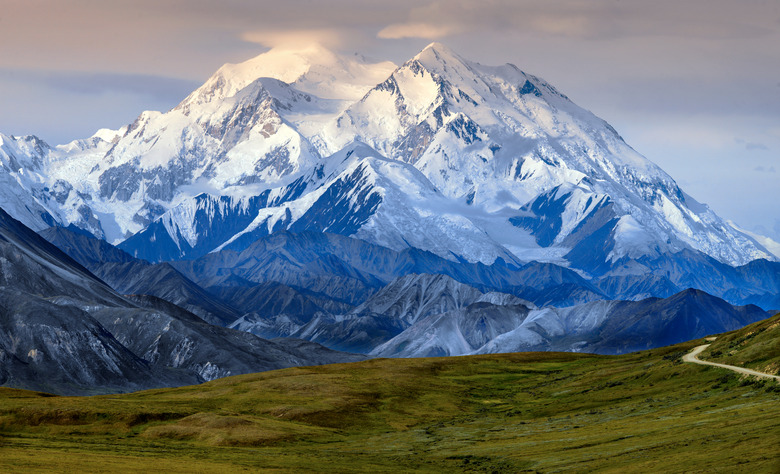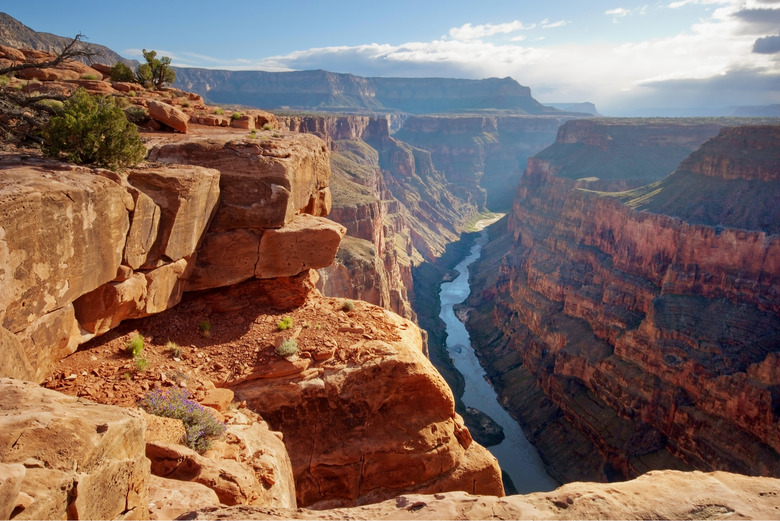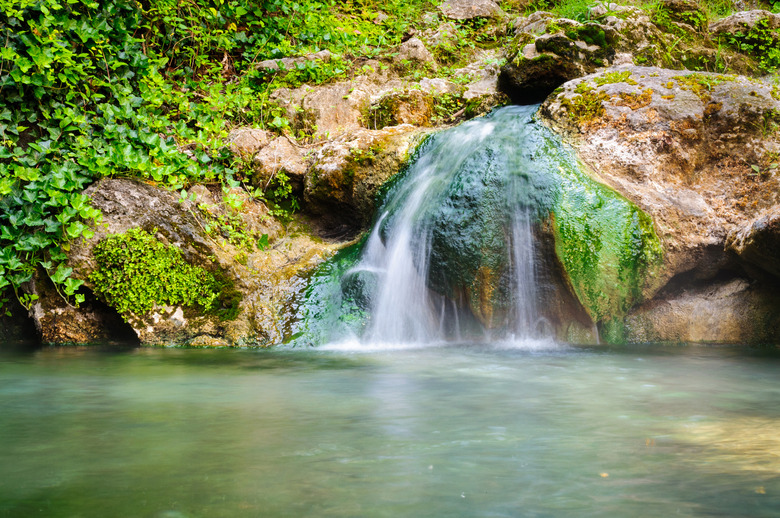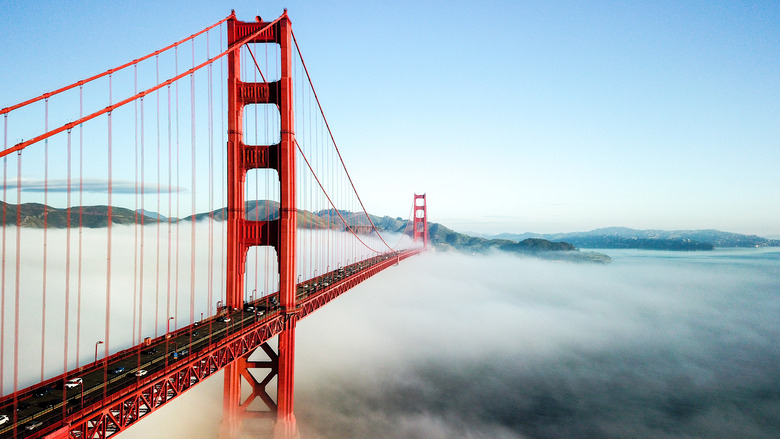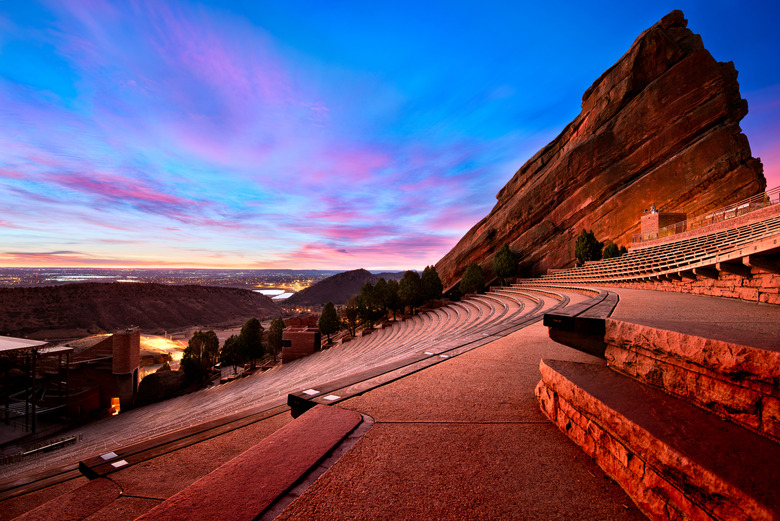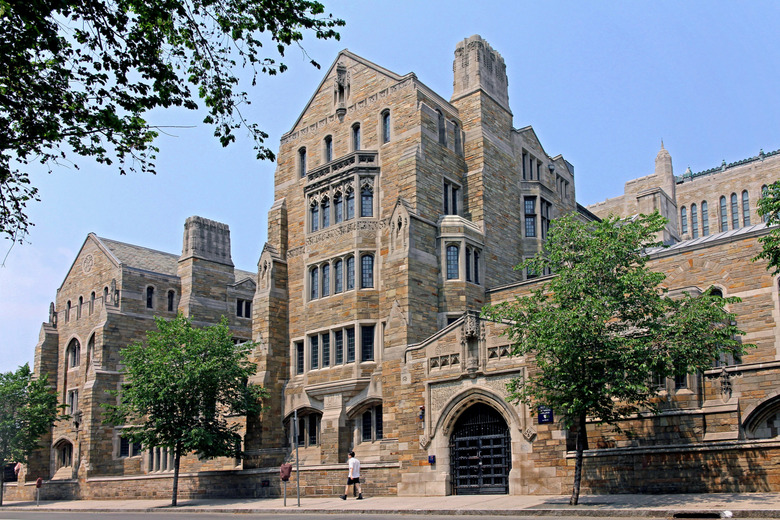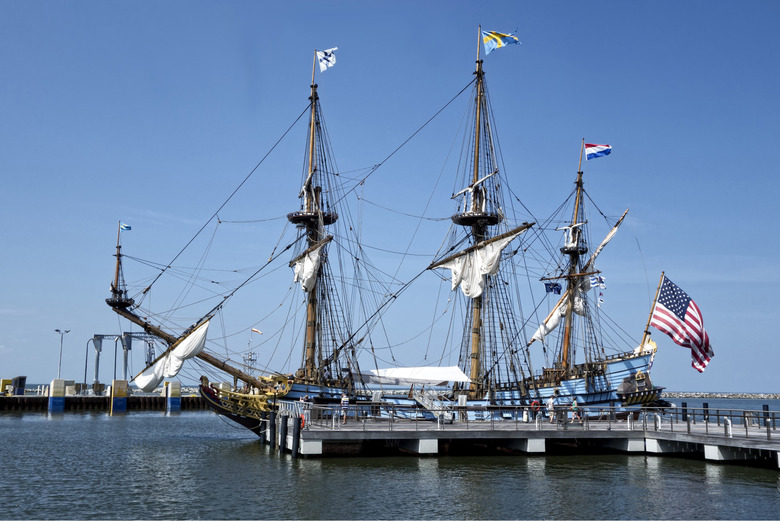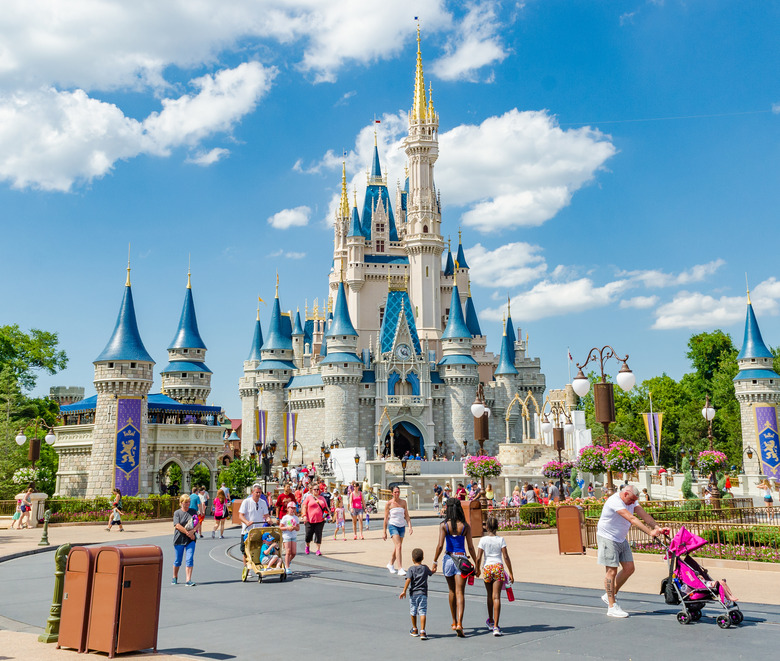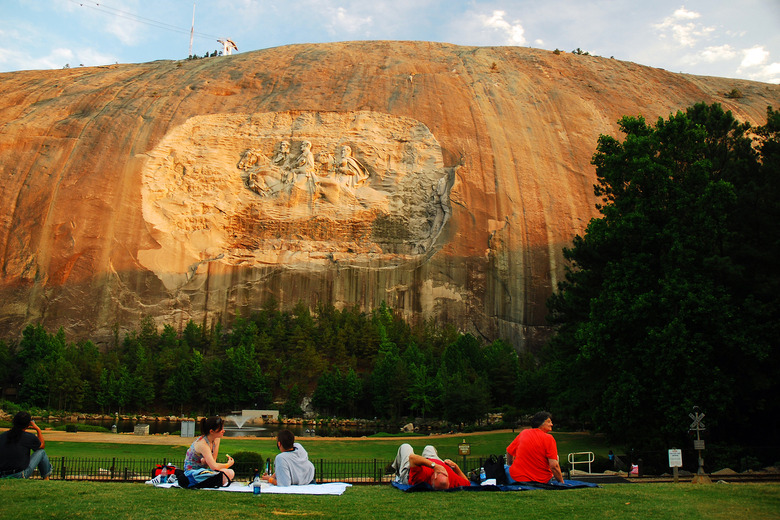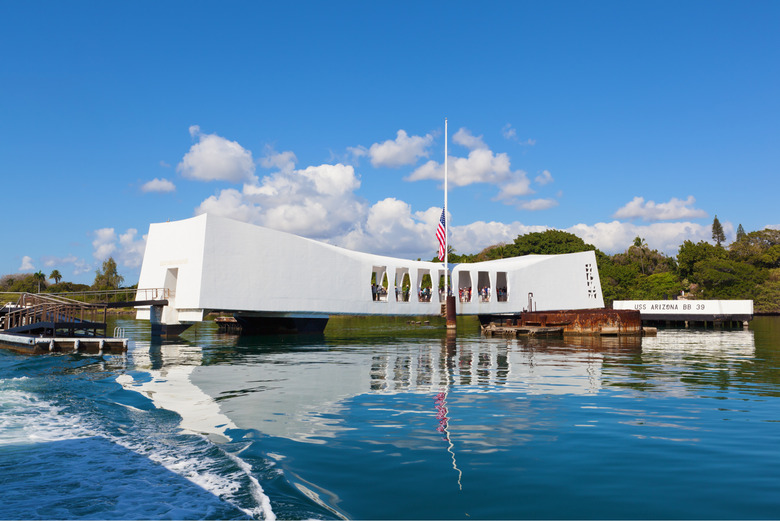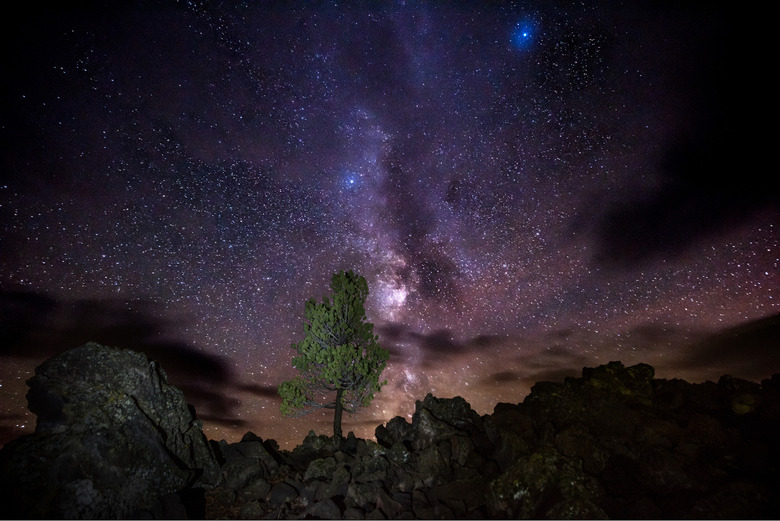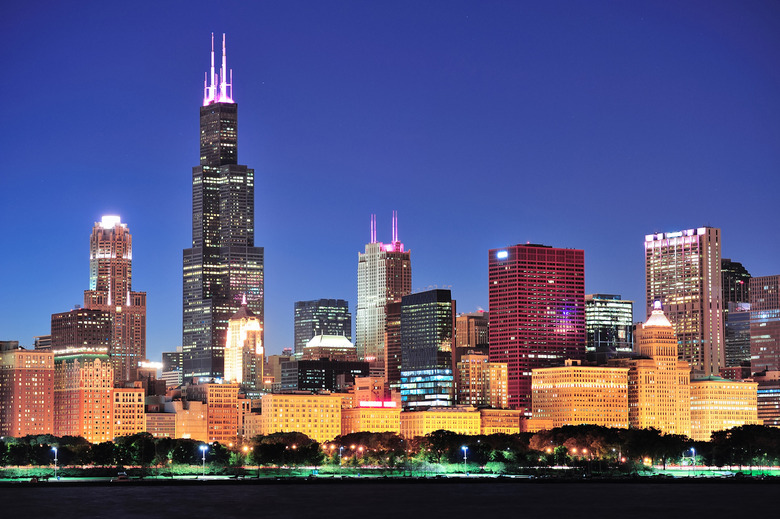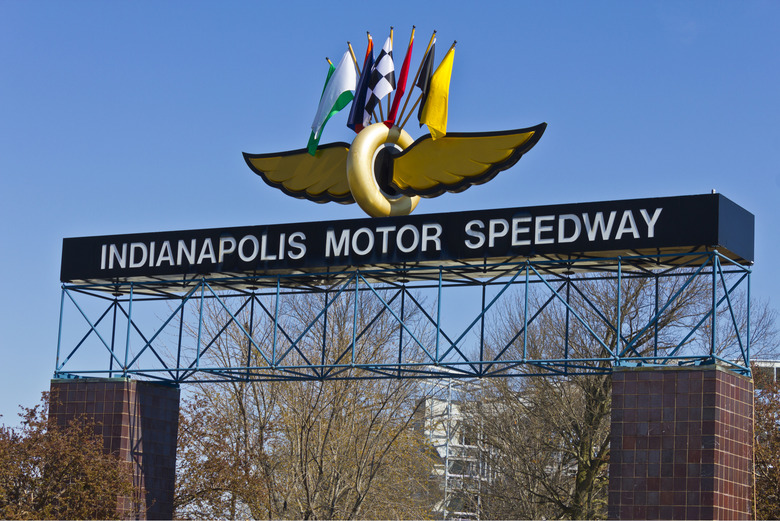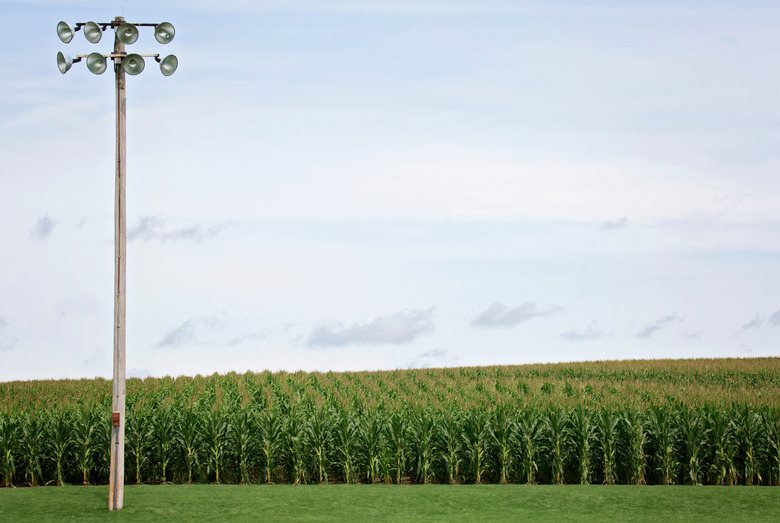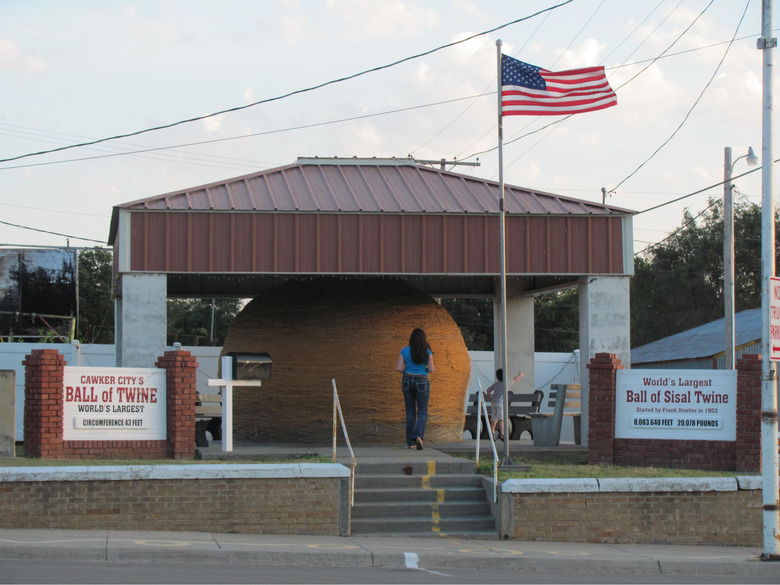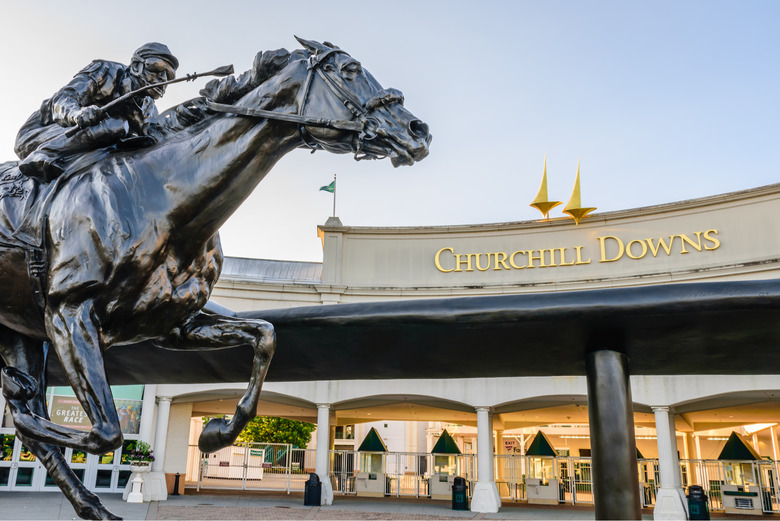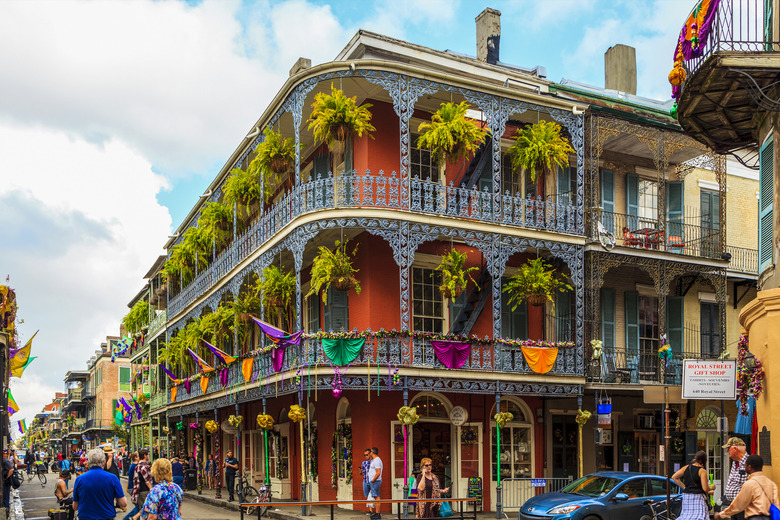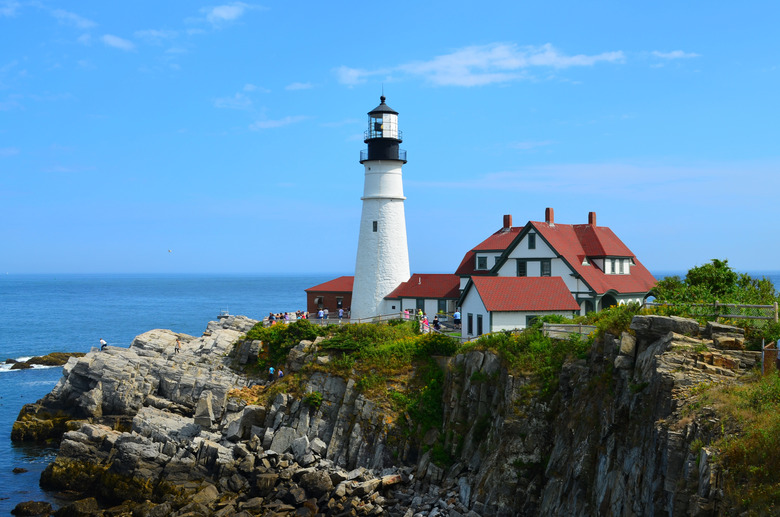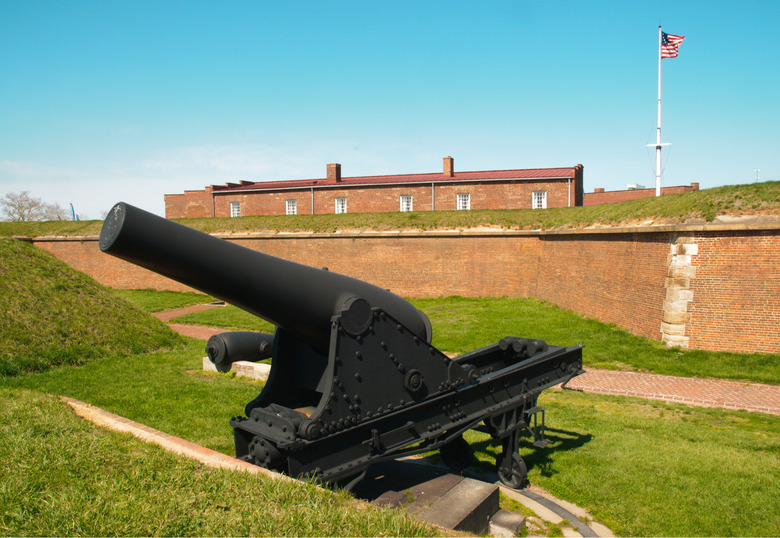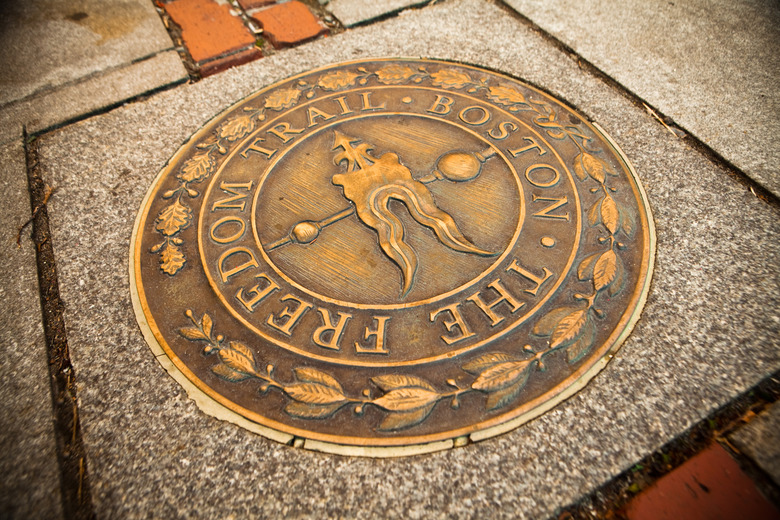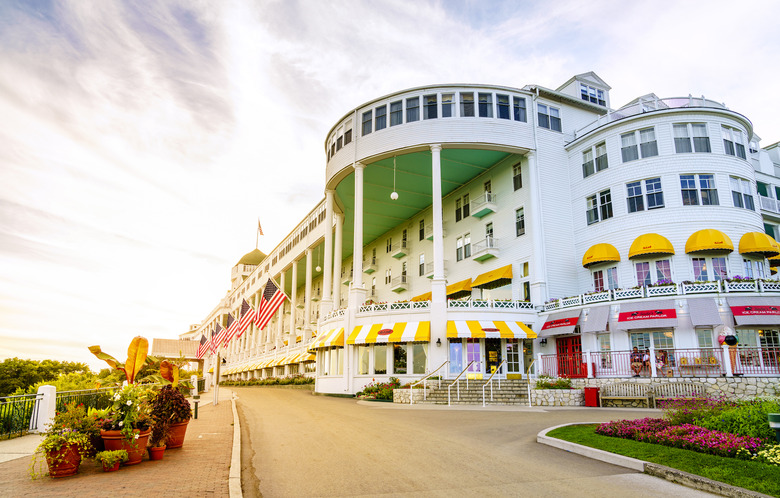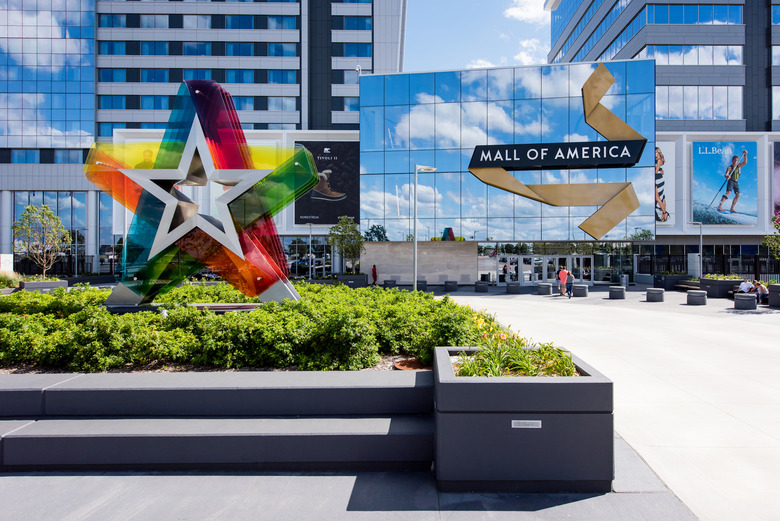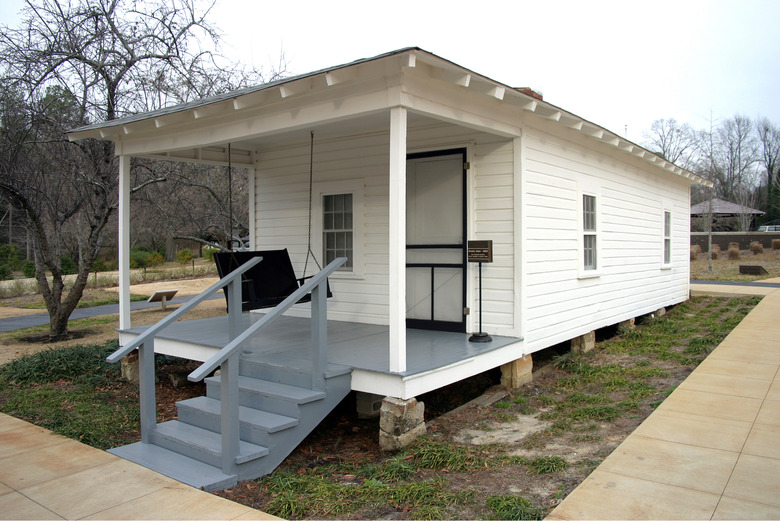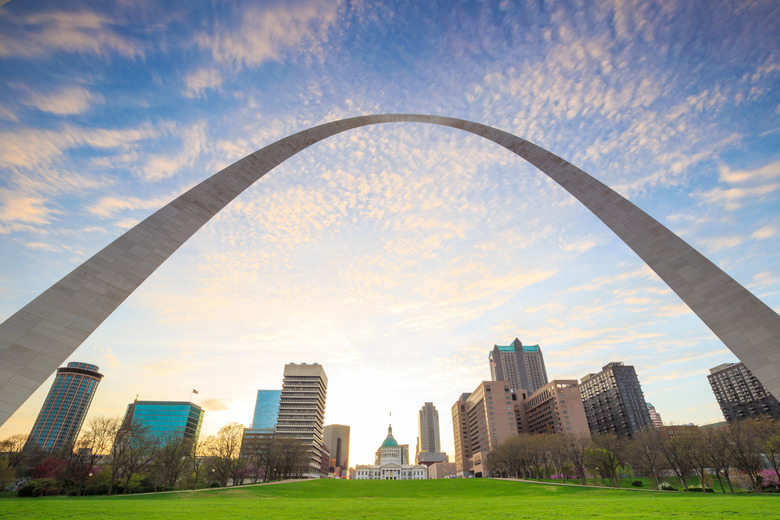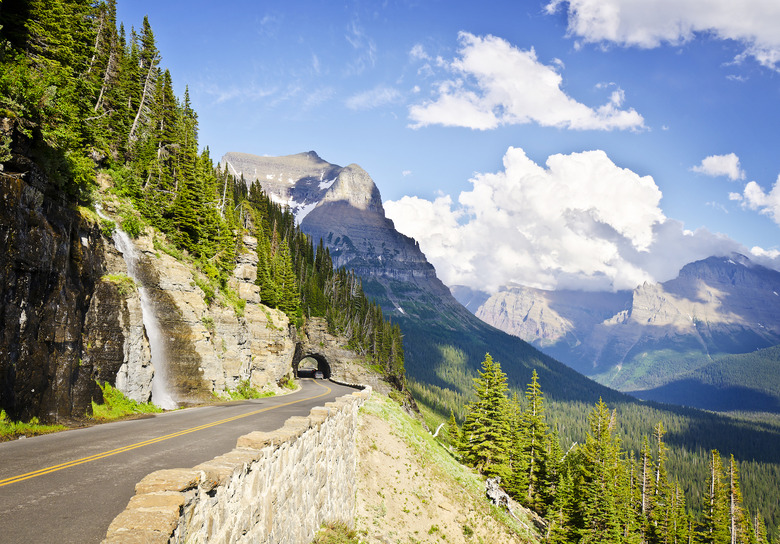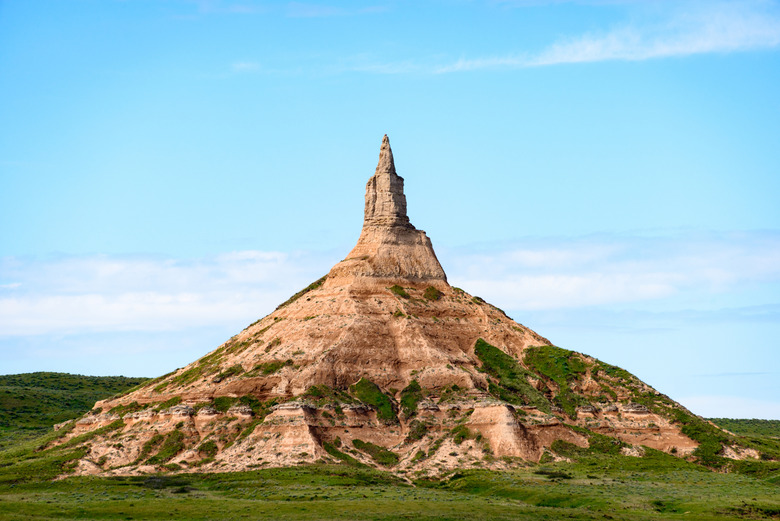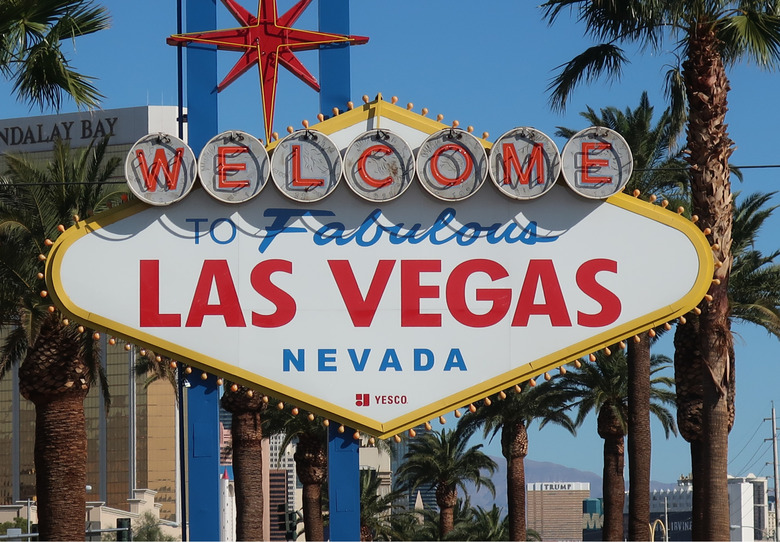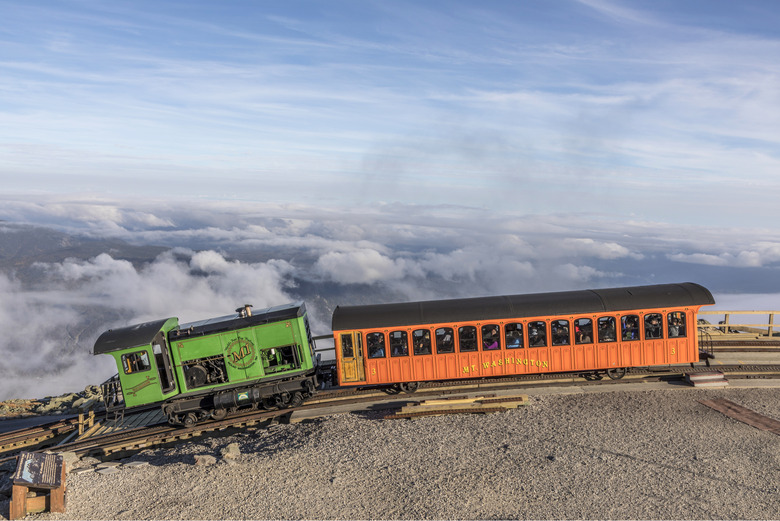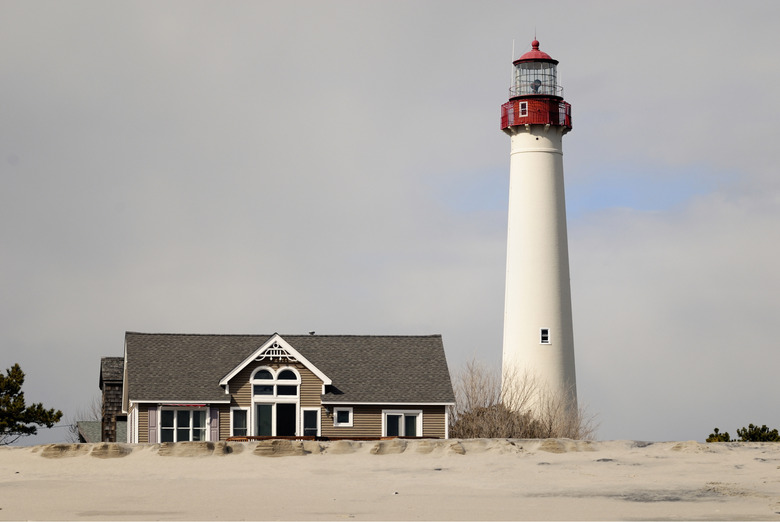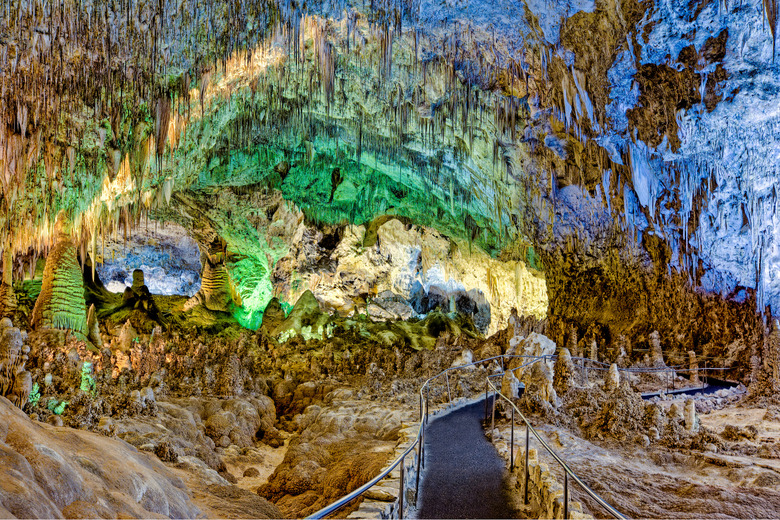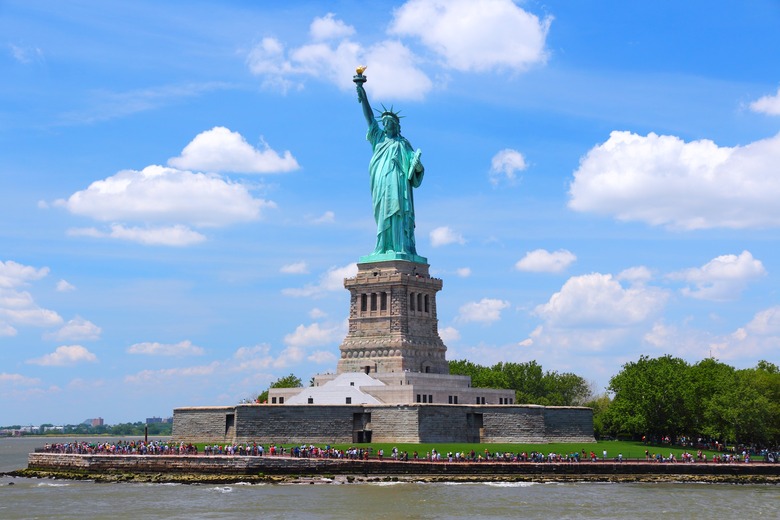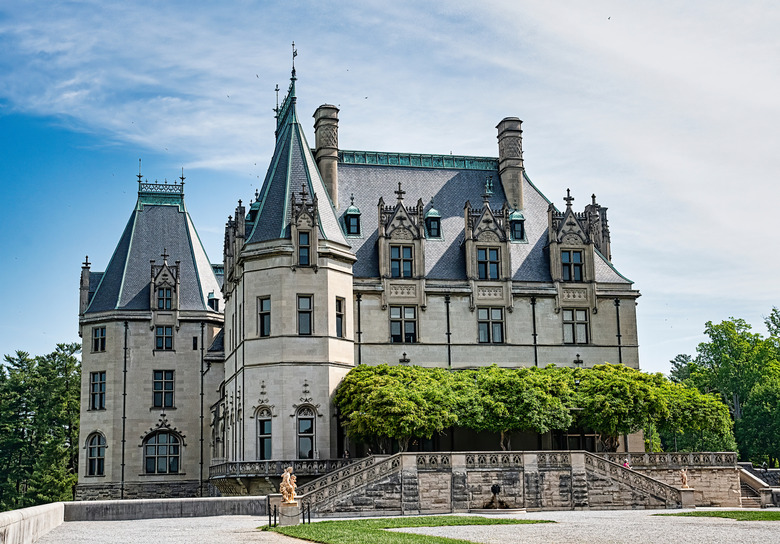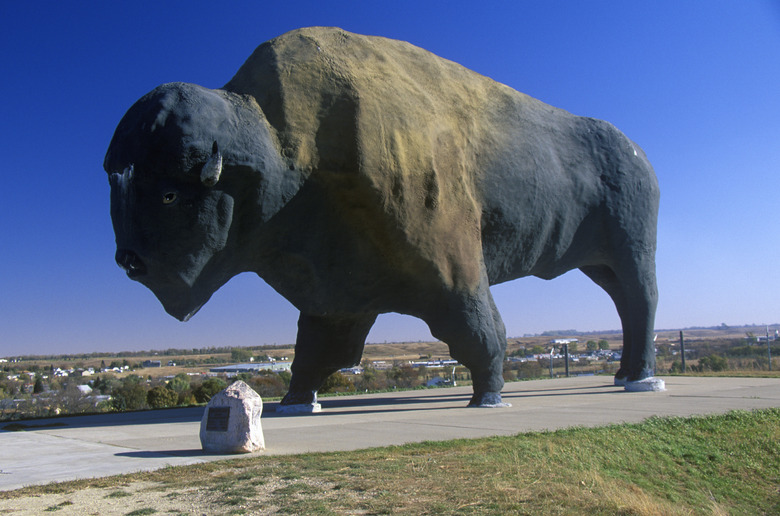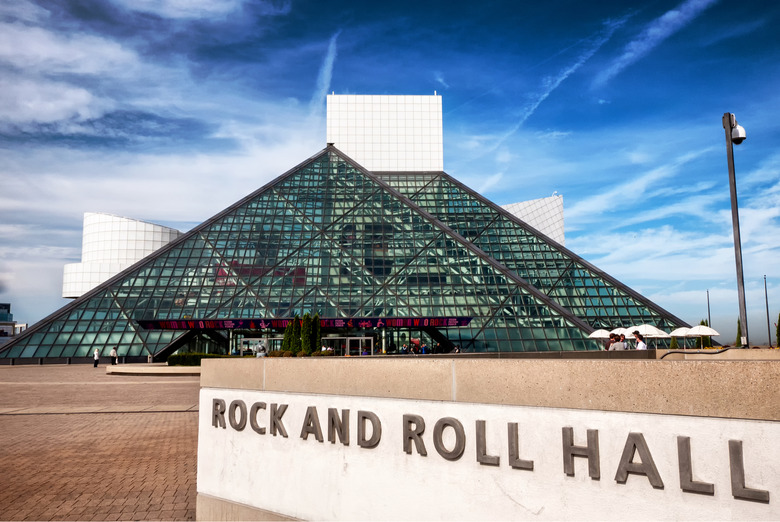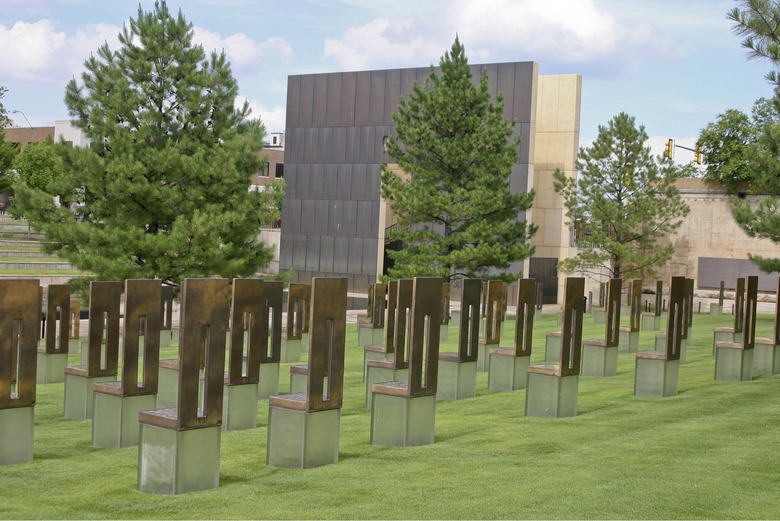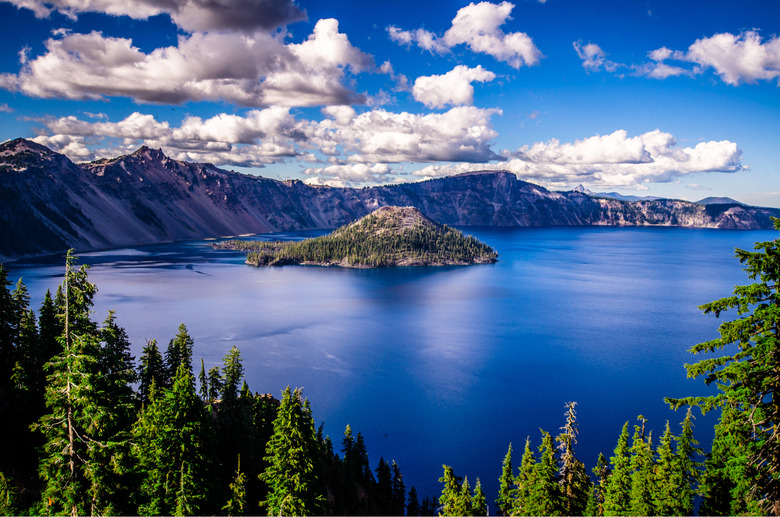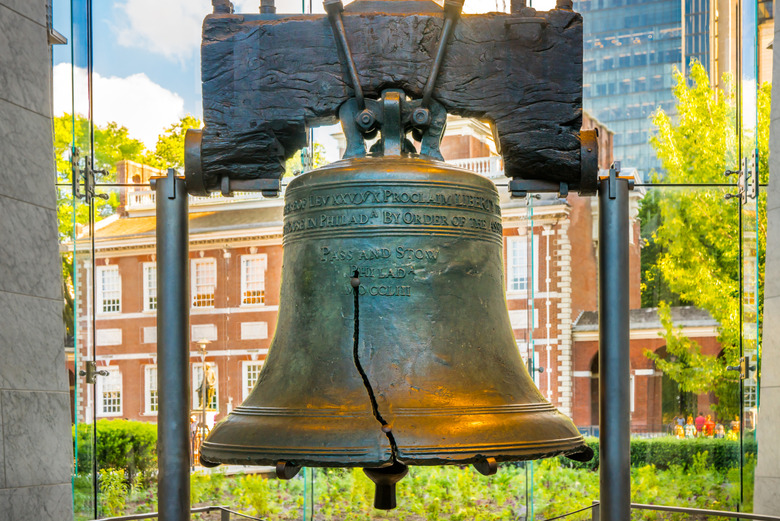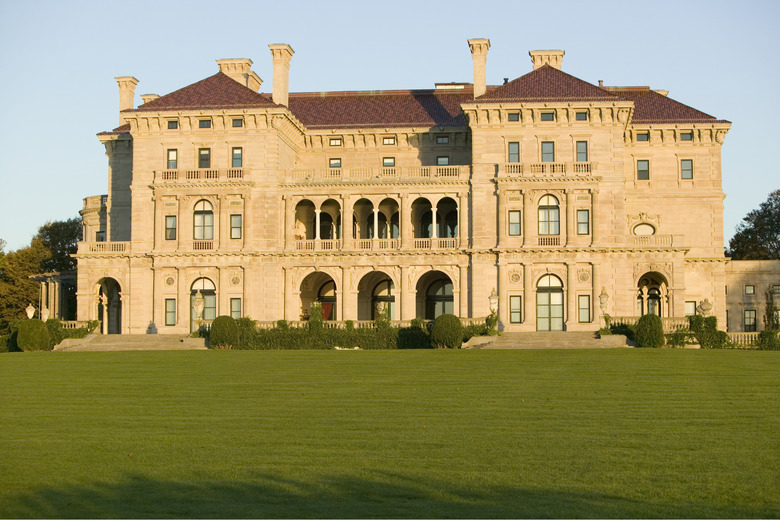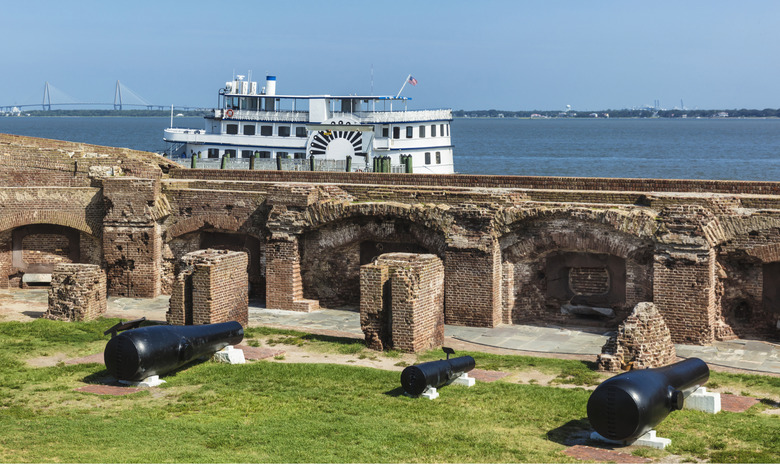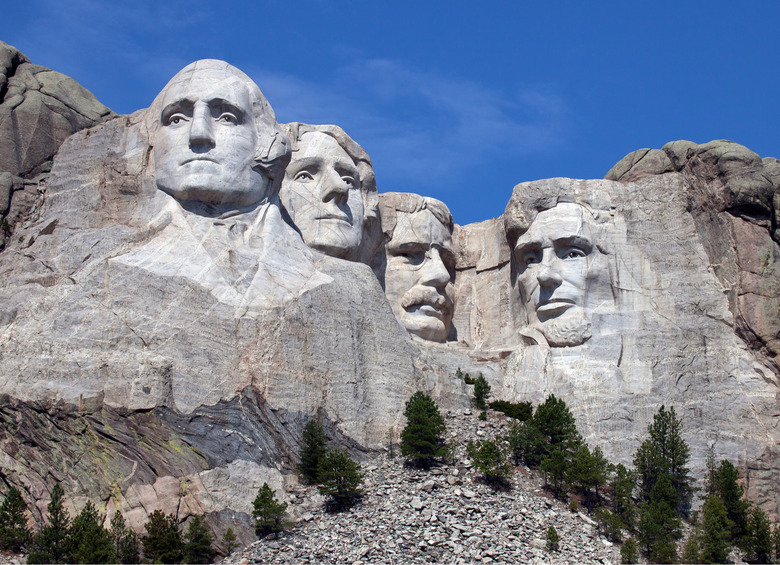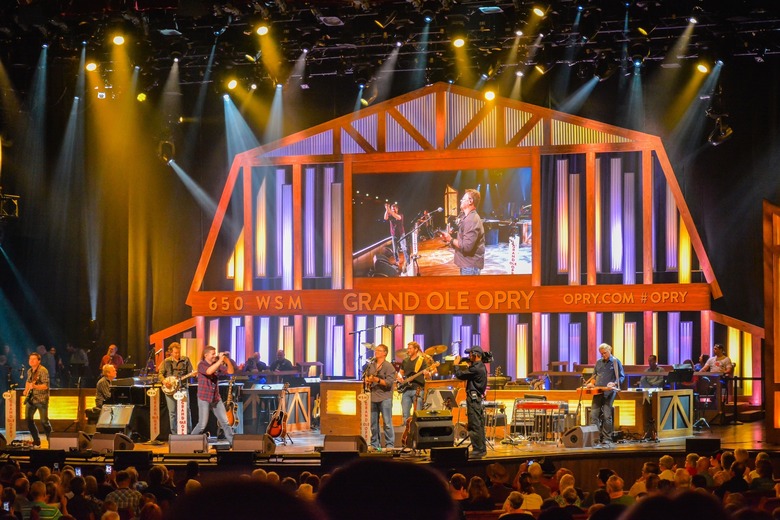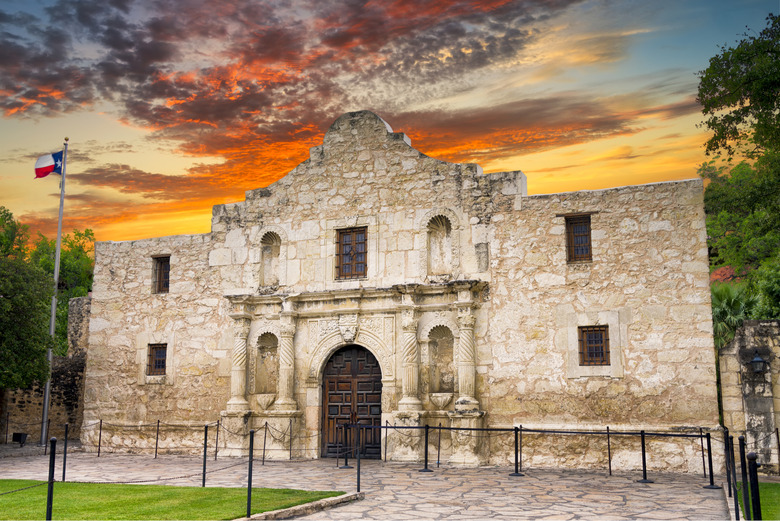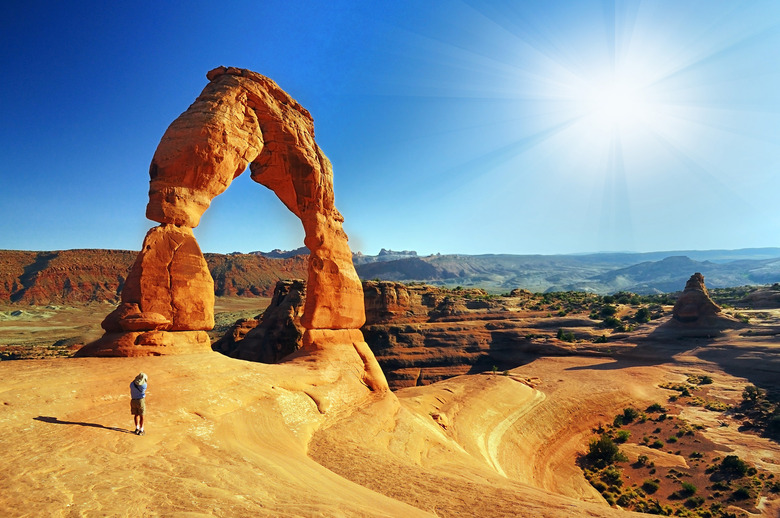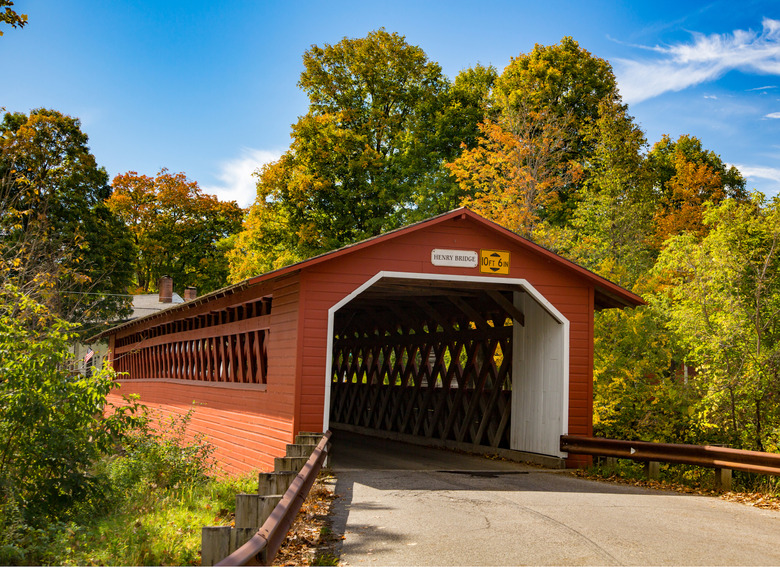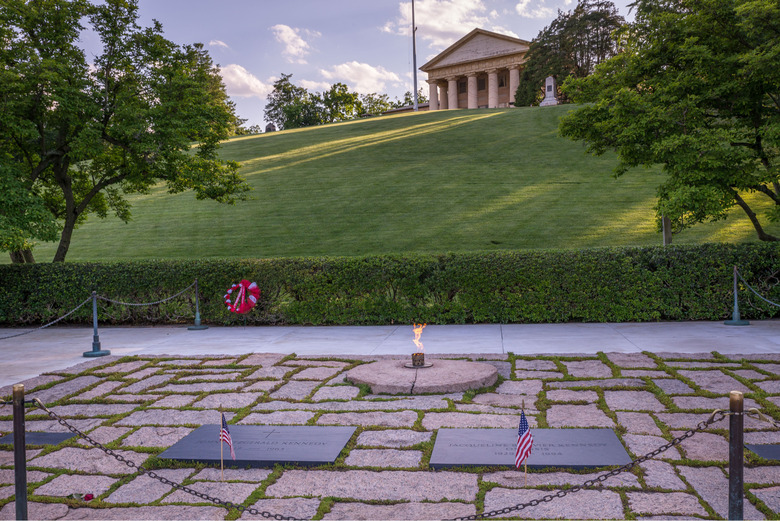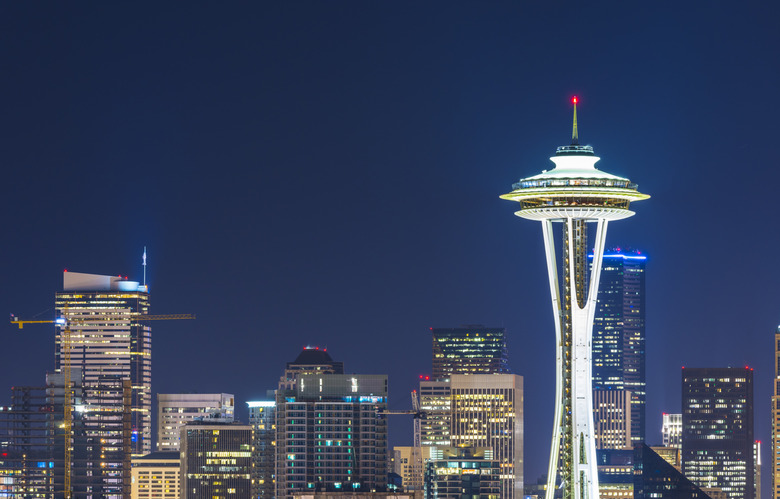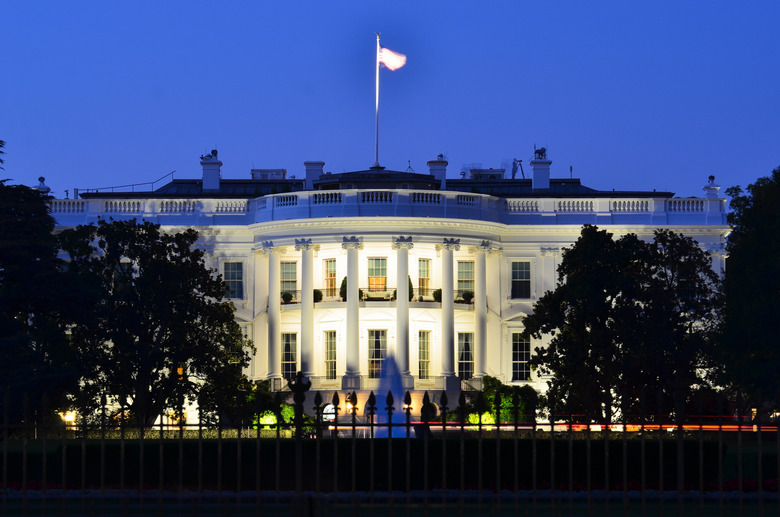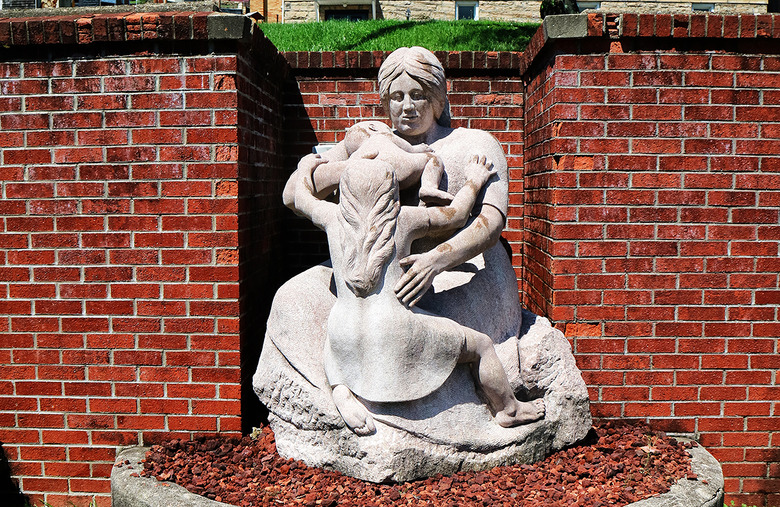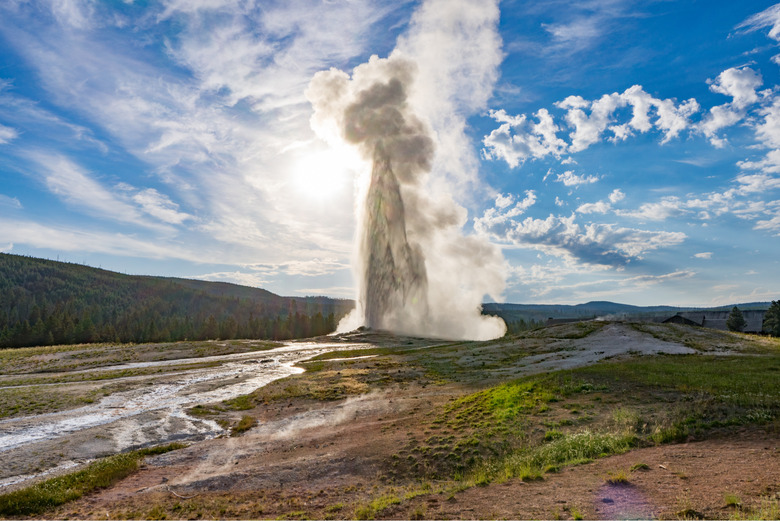The Most Iconic Landmark In Every State
There are some places in America that so capture the spirit and culture of a state that they become truly iconic. They're the places that flood your feeds with pointing fingers and provide backdrops for scenes in your favorite films. They're must-visit destinations for history buffs all across the country and identifiers of a city that you can't leave without seeing. They're iconic landmarks we almost all recognize.
Some serve as memorials for people who have lost their lives, some are popular tourist destinations and some are just so beautiful you can't help but stare in awe. Regardless, each state across America has its own remarkable landmark that tells a special story to all who visit.
Methodology
When traveling to a new state on a family vacation or romantic trip, most of the time it gets captured on camera. We've compiled a list of landmarks both of the natural wonder and some man-made marvel varieties in each state that not only speak to important parts of local history but also are some of the most tagged, tweeted and talked about places on social media.
Alabama: USS Alabama battleship
The USS Alabama, aka Mighty A, served a noble career in World War II and is now permanently moored in Mobile Bay, serving as a museum ship in her namesake state. The Alabama measures half as long as the Empire State Building is tall, and has now hosted millions of visitors as part of Mobile's Battleship Memorial Park. You may have seen her in the 2016 Nicolas Cage film "USS Indianapolis: Men of Courage," or in the many photos taken by Alabama visitors.
Alaska: Denali
Breathtaking Denali soars to a height of over 20,000 feet, making it North America's highest peak. It's such a popular photo op that Alaska's tourism agency offers a whole page of options explaining how to snap the best shot of the monster mountain.
Arizona: Grand Canyon
The Grand Canyon was named a national monument in 1908 and then a national park in 1919. It is a true American icon. From the Griswolds of "National Lampoon's Vacation" to "The Brady Bunch," this bucket list beauty has long been a part of pop culture. The National Park Service recommends you snap your shots at the "Golden Hour," aka the time shortly after sunrise or before sunset to capture soft lighting and the canyon's famed warm glow. It's one of the best places in the world to watch the sun rise.
Arkansas: Hot Springs National Park
Arkansas brags that it's the "Natural State," and Hot Springs National Park just confirms that nickname. The park is devoted to the 47 geothermal springs that bubble out of Hot Springs Mountain. You can't swim in them — at an average of 143 degrees, they're too hot — but you can photograph them, fill bottles of water to take home or soak at one of the bathhouses.
California: Golden Gate Bridge
There is no denying that California is jammed with landmarks, from the Hollywood sign to Disneyland's Sleeping Beauty Castle to the natural wonders of Yosemite National Park. But perhaps nothing shouts "Golden State" quite as loudly as San Francisco's vaunted Golden Gate Bridge, the iconic bridge connecting the City by the Bay with Marin County.
Colorado: Red Rocks Park
There are so many marvelous mountain vistas in Colorado that it's hard to choose just one, but this icon leaves tourists seeing red. Marvel at the natural beauty of Red Rocks Park in Morrison, Colorado, known for its stunning ancient red sandstone outcroppings. In addition to acres of hiking trails and numerous photo opportunities, the crown jewel is the world-famous natural amphitheater that has hosted everyone from The Beatles to The Grateful Dead.
Connecticut: Yale University
You don't have to be a scholar to appreciate the beauty of Connecticut's famed Yale University, which was established in 1701, decades before the United States of America even became a sovereign nation. The New Haven school offers free student-led tours of its impressive and diverse campus. With soaring towers and ornate gates, it's one of the most beautiful college campuses in America.
Delaware: Kalmar Nyckel
Voyage back in time and snap a photo of the impressive replica of the Kalmar Nyckel, one of America's pioneering colonial ships. The original was one of a kind in 1638. The impressive tall ship is docked at the Tatiana & Gerret Copeland Maritime Center on the Christina River in downtown Wilmington and sails from May through October each year. Visitors who lack the sea legs can also get a dockside tour and still get a true look into the past.
Florida: Walt Disney World’s Cinderella Castle
America may not be home to impressive real-life castles that could be found elsewhere around the world, but the one at Walt Disney World still enchants. The 189-foot-tall Cinderella Castle has welcomed millions of visitors to Magic Kingdom with its lofty spires and turrets as the symbol of the park. (Disneyland's castle in Anaheim, California, is named for Sleeping Beauty, one way the parks are totally different places.)
Georgia: Stone Mountain
Stone Mountain Park, with its isolated mountain more than 1,000 feet above sea level, is the Peach State's most popular destination — but it is not without controversy. The mountain features a carving of three Confederates — President Jefferson Davis and Generals Robert E. Lee and Thomas "Stonewall" Jackson — and is said to be the largest high relief sculpture in the world. There have been numerous calls for the large carving to be removed. The park itself has numerous other attractions as well though, from golf to a dinosaur-themed experience called the Dinotorium.
Hawaii: Pearl Harbor USS Arizona Memorial
It was an infamous December day in 1941 when Japan attacked an unsuspecting Hawaiian naval base, bringing the U.S. into World War II. Hawaii may be home to the most beautiful coastlines in the world, but one of its top attractions remains the somber and reverent USS Arizona Memorial at Pearl Harbor. Here, visitors can view the remains of the sunken battleship and read the names of those who forever rest there.
Idaho: Craters of the Moon National Monument
Few will ever step foot in space, but Idaho's Craters of the Moon National Monument and Preserve may be the next best thing. NASA astronauts even studied the land to prepare for moon trips. The must-see weird and wonderful landscape of dormant volcanoes features lava beds and tubes, cinder and spatter cones.
Illinois: Willis Tower
Many Americans still think of it as the Sears Tower, but Chicago's tallest skyscraper is officially named the Willis Tower. It stands 1,450 feet high above the city and boasts 110 stories. On a clear day, visitors can see four states from its observation deck. If you're brave, you can step out on The Ledge, a glass balcony that extends four feet outside the 103rd floor.
Indiana: Indianapolis Motor Speedway
Start your engines and make your way to the Indianapolis Motor Speedway, home of the famed Indy 500. How huge is this track? Its permanent seating capacity of more than 240,000 is said to be the largest of any sports venue in the world. On the grounds of the track, you can visit the associated museum and hall of fame.
Iowa: Field of Dreams
"If you build it, he will come," was the message of the 1989 Kevin Costner baseball fantasy drama "Field of Dreams." And now fans of the movie can come to tour the Dyersville farm and field where the Oscar-nominated film was shot. It's one of many movie filming locations that cinephiles can actually visit.
Kansas: World’s Largest Ball of Twine
Perhaps the quirkiest landmark on this list is the World's Largest Ball of Twine, located in tiny Cawker City, Kansas. Other cities try to lay claim to the title, but as of 2018, Cawker City said its ball weighed about 20,000 pounds, and the city hosts a Twine-a-thon every summer to make it even bigger. It's one of the quirky roadside attractions across America you need to see.
Kentucky: Churchill Downs
There's no more famous horse-racing track in America than Louisville's Churchill Downs, home of the Kentucky Derby. Those who can't make it to the picturesque twin spires for the big day can watch other thoroughbred races at the track (and snap iconic photos) or visit the Kentucky Derby Museum, open 359 days a year.
Louisiana: French Quarter
Laissez les bons temps rouler in the French Quarter of New Orleans, where stories abound from the one-of-a-kind homes, wrought-iron balconies, music, mouth-watering restaurants and historic parks. The "Crown Jewel" of the city, the French Quarter was founded in 1718 and is the quintessential New Orleans image that pops into most minds when the city is mentioned. For a truly unforgettable experience, visit during Mardi Gras.
Maine: Portland Head Light
Portland Head Light, a historic lighthouse in Cape Elizabeth, exemplifies Maine's classic New England beauty and picturesque coastline. Portland Head Light is Maine's oldest lighthouse, with the first lighting dating to 1791. Visitors can hike, fly kites, take tours and visit the museum located within the former Keepers' Quarters.
Maryland: Fort McHenry
O say can you see ... the inspiration for America's national anthem? The stirring words of "The Star-Spangled Banner" were inspired by the defense of Baltimore's Fort McHenry during the War of 1812. The fort is preserved today as the Fort McHenry National Monument and Historic Shrine, and offers historic exhibits, living-history programs and military ceremonies.
Massachusetts: The Freedom Trail
There aren't many other places in America where you can follow in the footsteps of the founding fathers, but you can in Boston. The 2.5-mile red line of the Freedom Trail takes visitors to 16 sites that are significant to more than 250 years of the nation's history. The walk features a collection of museums, churches, burying grounds and even a ship that tell the tale of the American Revolution and what came after. The Freedom Trail sees 4 million people annually, according to the organization, and is one of the must-see destinations for history buffs.
Michigan: Mackinac Island
Leave your cars behind on Michigan's Mackinac Island — almost all cars are banned in this historic place, where the entire island is listed as a National Historic Landmark. Photo ops abound, from the horse-drawn carriages to the historic museums to the stunning Grand Hotel, one of the oldest hotels in America, which boasts the world's largest front porch at 660 feet.
Minnesota: Mall of America
Shop till you drop at the mammoth — 96.4 acres of retail space — Mall of America in the Minneapolis suburb of Bloomington. There are more than 500 stores, an aquarium, mini-golf course, movie theaters and a full amusement park, all protected from Minnesota snow, making it one of the best places in America for indoor fun when it's too cold to go outside.
Mississippi: Elvis Presley Birthplace
When in Tupelo, Mississippi, head to the simple two-room shotgun shack where musical legend Elvis Presley was born. Elvis Aaron Presley was born on Jan. 8, 1935, in the two-room house built by his father, grandfather and uncle. At the landmark, fans can see bronze statues of the icon, visit the building where Presley attended church and explore the museum.
Missouri: Gateway Arch
Snap a picture of the Gateway Arch in St. Louis and no one will doubt where you've been. The swooping, elegant structure was completed in 1965 and is the tallest man-made monument in the U.S., standing 630 feet high. Trams take visitors to the top to marvel at the stunning view that encompasses 30 miles.
Montana: Going-to-the-Sun Road
The very name "Going-to-the-Sun Road" hints at the breathtaking views of this scenic 50-mile mountain road that is located in Montana's Glacier National Park, one of the most underrated tourist spots in the world. Visit in good weather — this two-lane, narrow road is filled with hairpin turns and crosses the Continental Divide at 6,646 feet. If you'd rather not drive it yourself, take a guided tour instead — it's easier to snap photos that way, too.
Nebraska: Chimney Rock National Historic Site
The slender spire of Chimney Rock National Historic Site was a landmark for early American pioneers heading west. Today it still shoots up from the Nebraska landscape like a church steeple at 325 feet, making for memorable photographs. The visitor center at the site includes museum exhibits and media presentations about those early days.
Nevada: Las Vegas Strip
You don't have to be a professional gambler to bet on the fact that visitors to Sin City snap at least one shot of the neon-splashed Las Vegas Strip. Its flashy signs, wildly expensive restaurants and colorful landmarks are just waiting to be photographed. Fun fact: The famed "Welcome to Fabulous Las Vegas" sign is actually outside the city limits, but it stars in tourist photos just the same.
New Hampshire: Mount Washington Cog Railway
Ride the rails with a trip on New Hampshire's Mount Washington Cog Railway, the first mountain-climbing railway in the world. Visitors take the three-hour ride up the western slope of the majestic mountain, ending just short of the 6,288-foot summit. On a clear day, travelers can see five states, Canada and the Atlantic Ocean, making it one of the most scenic train rides in America.
New Jersey: Cape May Lighthouse
The Cape May Lighthouse, built in 1859, will take your breath away twice: once as you climb the 199-step spiral staircase, and again when you take in the panoramic view from the top. Don't want to climb? The lighthouse is located in Cape May Point State Park, which includes nature trails, guided walks, a museum and picnic facilities at one of the best coastal towns in America.
New Mexico: Carlsbad Caverns
Awe-inspiring Carlsbad Caverns National Park, located in the Guadalupe Mountains of southeastern New Mexico, is like nothing most people have ever seen. The highlight of a visit is Carlsbad Cavern itself and the breathtaking "Big Room," a natural limestone chamber that is considered to be the largest single cave chamber by volume in North America, at nearly 4,000 feet long, 625 feet wide and 255 feet high. The park service allows flash photography in the cave and even tripods in some areas.
New York: Statue of Liberty
She's not just a symbol of New York, the Statue of Liberty is perhaps the most recognizable symbol of America and is one of the most popular American tourist destinations. The colossal copper lady, as tall as a 22-story building, was famously given by the people of France to the people of the United States and stands as a beacon of freedom and friendship. Tickets to the crown and pedestal are available but limited — the torch itself has been off-limits to the public since 1916. For those afraid of heights, fortunately the statue is easy to photograph from the deck of the Staten Island Ferry, the Battery and many other locations.
North Carolina: Biltmore Estate
Think your house takes forever to clean? Give thanks you don't live in North Carolina's Biltmore Estate, a house the size of four football fields that boasts 35 bedrooms and 43 bathrooms. It is considered one of the biggest mansions in the U.S. The spectacular Gilded Age mansion was once the family home of George and Edith Vanderbilt and is still owned by their descendants. The home is still stocked with items from the original owners' art collection and includes a bowling alley, indoor pool, rooftop deck and 16th-century tapestries. Photos are allowed both inside and outside, with some restrictions.
North Dakota: World’s Largest Buffalo Monument
Sure, South Dakota has Mount Rushmore, but its northern neighbor has a giant buffalo. The 26-foot-tall, 60-ton concrete animal has been standing since 1959. In 2010, after decades of no identity, he was named Dakota Thunder. Time with the beast is free, there is no admission, and he welcomes friends year 'round. The nearby National Buffalo Museum shares the history of the majestic American animal and also features 25-30 of the real guys roaming 200 acres when a giant concrete version just won't cut it.
Ohio: Rock and Roll Hall of Fame
Rock and roll is here to stay, and Cleveland's Rock and Roll Hall of Fame is a musical must-visit. The astonishing tower with its striking glass pyramid was designed by noted architect I.M. Pei. Inside, you'll find six levels of memorabilia of all kinds, from scribbled lyrics to stage costumes to guitars, and flash-free photos are encouraged in almost all areas.
Oklahoma: Oklahoma City National Memorial & Museum
The Oklahoma City National Memorial pays tribute to all who were affected by the 1995 Oklahoma City bombing, which killed 168 people, including 19 children. The outdoor memorial is open 24 hours a day, 365 days a year. Its numerous symbolic features include a reflecting pool, a survivors' wall and 168 empty chairs, each marked with a name of a person lost on that day.
Oregon: Crater Lake
Formed 7,700 years ago by the collapse of a giant peak, stunning blue Crater Lake is now the country's deepest lake — and one of its most photogenic. Depending on the season, swim, hike, snowshoe and otherwise explore the breathtaking lake and its surroundings.
Pennsylvania: Liberty Bell
Let freedom ring: Philadelphia's Liberty Bell, famous crack and all, is an iconic symbol of American independence. Today, the bell is free to view at Liberty Bell Center, which is a part of Independence National Historical Park, and the National Park Service encourages visitors to snap — not a selfie — but a "Belfie."
Rhode Island: The Breakers
Tiny Rhode Island may be the smallest state, but it boasts one of the nation's largest homes. Newport mansion The Breakers was completed in 1895 as the summer home of Cornelius Vanderbilt II, a stunning, 70-room, Italian Renaissance mansion. The enormous waterfront house with wildly ornate interiors is designated a National Historic Landmark.
South Carolina: Fort Sumter
It was at Charleston's Fort Sumter that the first shot of the American Civil War was fired in 1861. Today, more than 150 years later, the restored fort is open for public tours. Museum exhibits explain the fort's role in history, and visitors are taken to the island fort via ferry.
South Dakota: Mount Rushmore National Memorial
Almost every American knows the Mount Rushmore National Memorial, and almost 3 million people visit the landmark every year. The Black Hills mountain has been carved to feature the 60-foot heads of George Washington, Thomas Jefferson, Theodore Roosevelt and Abraham Lincoln — a weirdly impressive sight. Photo buffs may want to note the hours that the sculpture is illuminated to snap an extra-special image.
Tennessee: Grand Ole Opry
Country music is the heart of Nashville, and the Grand Ole Opry is the heart of country music. The Opry is Nashville's No. 1 attraction and "country's most famous stage." The venue was founded in 1925 and through the years has hosted the biggest names in music and millions of fans. Music lovers who aren't visiting the city during a concert also have the option of taking a backstage tour.
Texas: The Alamo
"Remember the Alamo," the famous mission where Davy Crockett, Jim Bowie and others died in the legendary 1836 battle for Texas' independence. The historic destination includes guided tours and family-friendly activities. To honor the historic church where many gave their lives, photos inside the Alamo are prohibited, but an outdoor photo of the shapely building is a must.
Utah: Arches National Park
Arches National Park is aptly named for the more than 2,000 natural stone arches that fill the park. The striking red rocks and sometimes impossible to believe land formations are popular social media stars only boosted in beauty by stunning sunsets. The park can be accessed through several trails that lead to some of the most iconic National Park photos in feeds today.
Vermont: Covered bridges
There's just something about a covered bridge that sings of the romance and old-fashioned charm of days gone by. Vermont boasts over 100 covered bridges, giving it the highest number per square mile in the U.S. One classic, the Henry Covered Bridge that crosses the Waloomsac River near Bennington, may resemble an old painting, but the original 1840 bridge was actually rebuilt in 1989.
Virginia: Arlington National Cemetery
Virginia has many historic monuments, but few hold the weight of the nation's most hallowed ground, Arlington National Cemetery. Many famous Americans are buried here, including President John F. Kennedy and his brothers, Robert and Teddy; civil rights activist Medgar Evers; boxer Joe Louis; astronaut John Glenn and many more. Photos are allowed, but must of course be respectful, and tripods and lights are not permitted. The cemetery's most iconic memorial, the white marble Tomb of the Unknown Soldier, stands tall overlooking Washington, D.C.
Washington: Space Needle
Seattle's scenic Space Needle, built for the 1962 World's Fair, soars 605 feet above the Emerald City. Its stylish, futuristic shape can be photographed beautifully from many neighborhoods and parks in the city. Visitors can ride a glass elevator to the top and dine at the Needle's revolving restaurant or just admire the 360-degree view of the mountains, city skyline and Puget Sound.
Washington, DC: The White House
The White House in Washington, D.C. is the official residence of the president, but its nickname is The People's House. Visits to 1600 Pennsylvania Avenue must be scheduled through members of Congress, but taking outdoor photos of the nation's most famous home is free. The northern side of the building, which faces Lafayette Park, lets you take close-up photos, but the southern side and its rolling lawn make for breathtaking photos, too.
West Virginia: Andrews Methodist Episcopal Church
If you snap a photo here, send a copy to your mom. Andrews Methodist Episcopal Church is considered the "mother church" of Mother's Day. Anna Jarvis led the movement to recognize the holiday, holding the first ceremony at the Grafton, West Virginia, church in 1908. Decades later, in 1962, the church was incorporated as the International Mother's Day Shrine, meant as a shrine to all mothers. It includes displays about Anna Jarvis and her life, and celebrates a Mother's Day service annually.
Wisconsin: Frank Lloyd Wright’s Taliesin East
Legendary architect Frank Lloyd Wright designed himself a stunning home and studio south of Spring Green, Wisconsin, naming it Taliesin after a sixth-century Welsh poet. The buildings are poetry themselves, and a variety of tours for all ages are offered.
Wyoming: Old Faithful geyser
In Wyoming's Yellowstone National Park, good things come to those who wait. Travelers may have to bide their time until the famed cone geyser known as Old Faithful blows its top, but every 44 minutes to two hours, they're sure to get their impressive photo op. It shoots boiling water up to 180 feet high, but just for a few minutes at a time, so don't wander off while you're waiting — you might miss your chance to see one of the most beautiful sites in all of America's state and national parks.
More from The Daily Meal:
Local Slang Terms to Know From Every State
The Strangest Fact About Every State
United States of Food: Official State Foods
